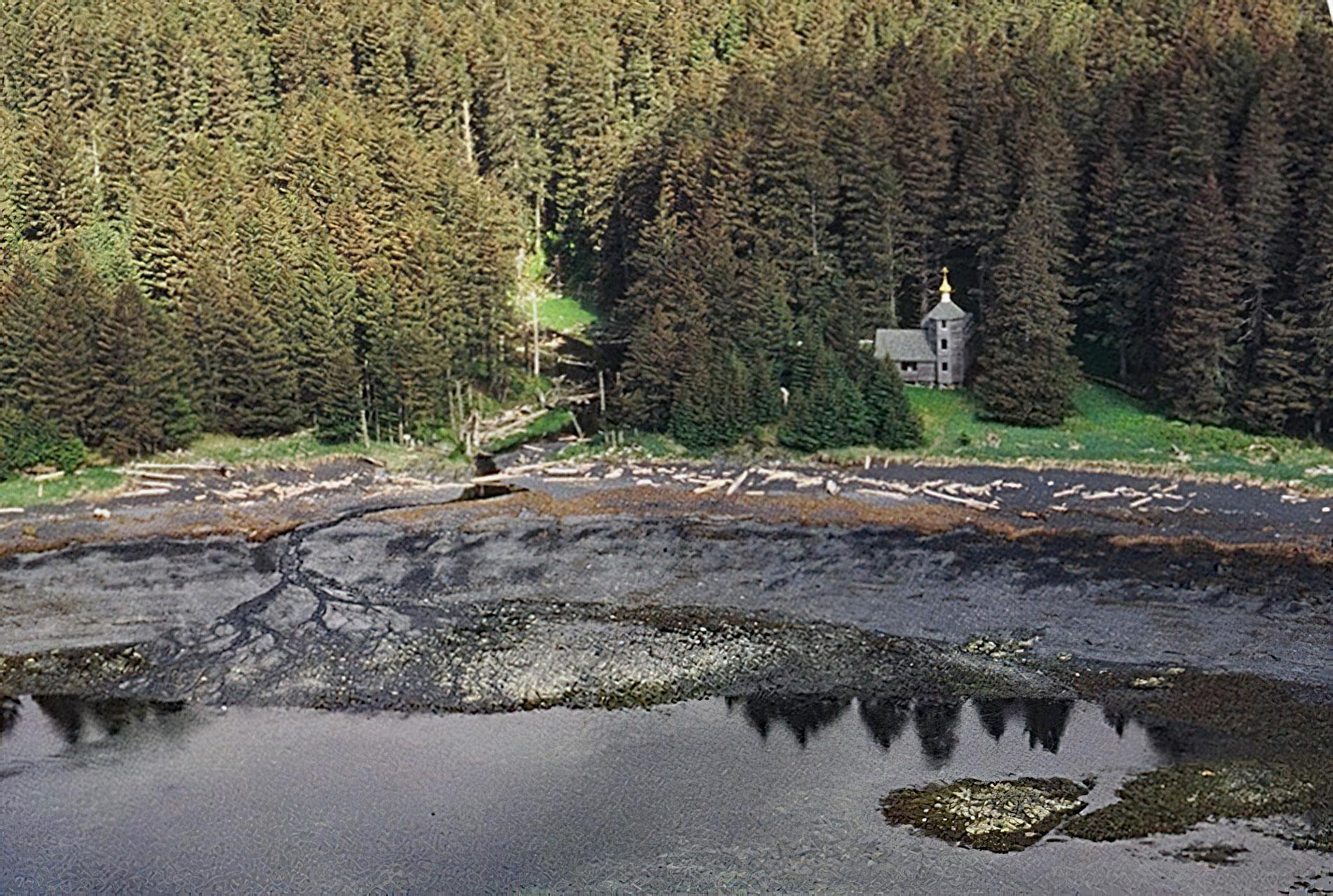Monks Lagoon is on Icon Bay, a bight about 1 mile (1.6 km) across, on the southeastern shore of Spruce Island, about 6.6 miles (10.6 km) north of Kodiak and 5.7 miles (9 km) south-southeast of Ouzinkie, Alaska. Spruce Island is northeast and across Narrow Strait from Kodiak Island. The name “Ostrov Yelovoi” or “Pine Island” was recorded in 1805 by Yuri Lysianskyi, who was an officer in the Imperial Russian Navy and the commanding officer of the Russian-American Company’s merchant sloop Neva that took part in the first Russian circumnavigation of the Earth.
From 1808 to 1818, Spruce Island was the hermitage of Herman of Alaska, later glorified as a saint and considered the patron saint of the Russian Orthodox Church in the Americas. The island is now a pilgrimage site for Orthodox Christians and there is a Russian Orthodox Church and monastery at Monks Lagoon.
Kad’yak was a wooden-hulled sailing merchant ship belonging to the Russian-American Company that was used to transport personnel and supplies among its settlements in Russian Alaska. In 1860, Kad’yak was carrying a load of ice from Kodiak and trade goods destined for San Francisco. After departing from Kodiak harbor on March 30, the vessel hit an uncharted submerged rock and immediately filled with water. The Kad’yak was kept afloat for three days by her cargo of ice, but drifted towards Spruce Island and sank in Icon Bay on April 2, 1860. The mast of the ship protruded above the water with a single yardarm forming the shape of a cross, visible from the shrine of Saint Herman on the shore of Spruce Island, giving religious significance to the story of the vessel’s misfortune. The shipwreck was discovered by divers in 2003. Read more here and here. Explore more of Monks Lagoon here:

